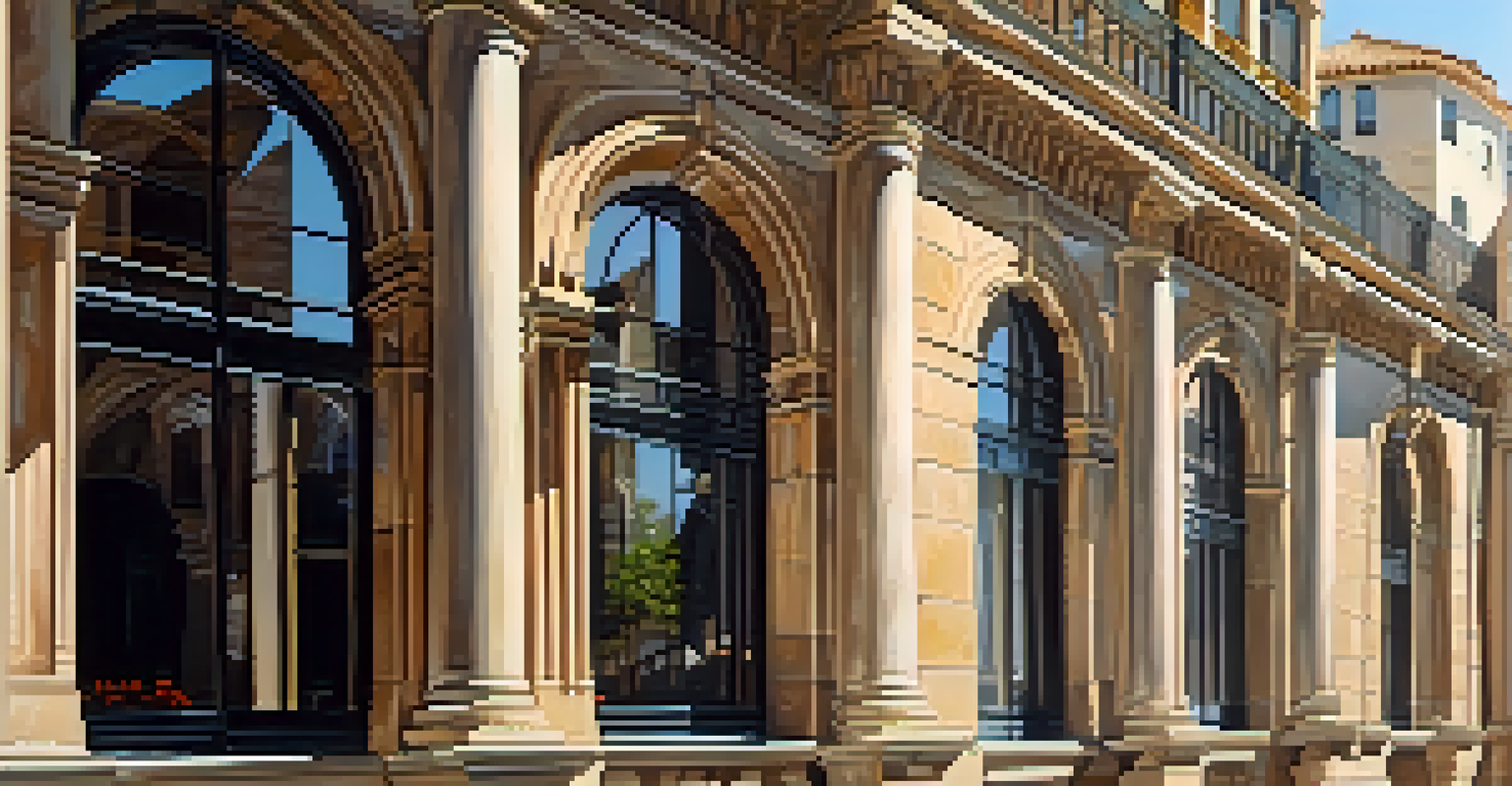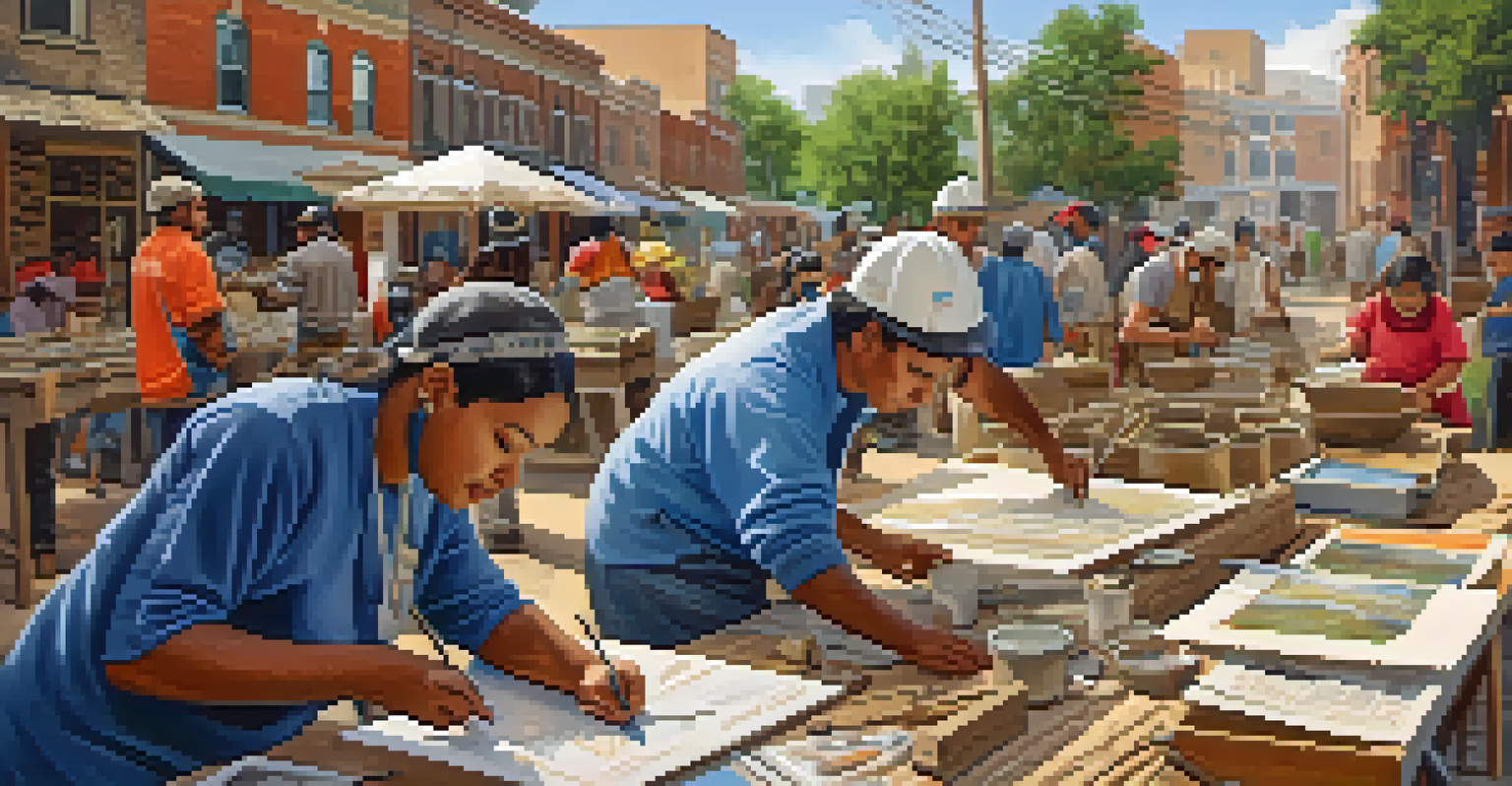Challenges Facing Spain's Efforts in Cultural Heritage Conservation

The Impact of Urbanization on Cultural Sites
Urbanization in Spain has led to significant encroachment on historical sites. As cities expand, many cultural landmarks find themselves overshadowed by modern developments. This not only diminishes their visibility but also threatens their structural integrity.
Heritage is our legacy from the past, what we live with today, and what we pass on to future generations.
For instance, in cities like Barcelona, contemporary architecture often clashes with centuries-old buildings, creating a juxtaposition that some find appealing, but many cultural purists see as a loss. Urban sprawl can also lead to the neglect of these sites, as resources are diverted to new construction projects.
Moreover, the pressure to accommodate tourism in these bustling urban areas can result in the over-commercialization of cultural sites, stripping them of their historical context and significance. Balancing urban growth with heritage conservation remains a formidable challenge.
Financial Constraints in Heritage Conservation
Funding is a critical issue for cultural heritage conservation in Spain. Many historical sites require extensive restoration work, which can be prohibitively expensive. With government budgets often stretched thin, securing adequate financial resources for preservation efforts can feel like an uphill battle.

Local governments often rely on grants, donations, and EU funding, but these sources can be inconsistent. When financial support dwindles, conservation projects may be put on hold or scaled back, leading to further deterioration of these invaluable sites.
Urban Growth Threatens Cultural Sites
Urbanization in Spain leads to conflicts between modern developments and historical landmarks, risking their visibility and structural integrity.
Additionally, the economic impact of events like the COVID-19 pandemic has left many institutions struggling to maintain their operations. Without sustained investment, Spain's rich cultural heritage faces the risk of being lost to time.
Political and Administrative Challenges
The political landscape in Spain can complicate heritage conservation efforts. Different regions have varying priorities and approaches to preserving cultural sites, resulting in a patchwork of initiatives that can sometimes conflict. This often leads to inefficiencies and a lack of cohesive strategy.
The past is never dead. It's not even past.
For example, while some regions may prioritize the restoration of medieval castles, others might focus on modernist architecture, creating disparities in funding and resources. Such fragmentation can hinder collaborative efforts that might otherwise yield better outcomes.
Additionally, bureaucratic red tape can slow down the decision-making process, delaying necessary action and allowing heritage sites to deteriorate further. Streamlining administrative procedures is essential to make timely interventions possible.
Environmental Factors Affecting Heritage Sites
Spain's diverse climate poses unique challenges to the preservation of cultural heritage. Factors such as rising temperatures, increased rainfall, and even the threat of wildfires can significantly impact the integrity of historical structures. Over time, these environmental stressors can lead to irreversible damage.
For instance, coastal sites are particularly vulnerable to erosion and rising sea levels, which threaten their very existence. Similarly, inland sites may suffer from the effects of drought and temperature fluctuations, which can weaken materials used in their construction.
Funding Challenges for Preservation
Financial constraints hinder the restoration of Spain's cultural heritage, as inconsistent funding sources can delay essential conservation efforts.
Addressing these environmental challenges requires not only immediate action but also long-term planning. Incorporating sustainability into conservation strategies is crucial for safeguarding cultural heritage against the impacts of climate change.
The Role of Tourism in Cultural Heritage Conservation
Tourism plays a double-edged sword in Spain's cultural heritage conservation efforts. On one hand, the influx of tourists can generate significant revenue, helping to fund preservation projects. On the other hand, the sheer volume of visitors can put immense pressure on fragile sites, leading to wear and tear.
For example, the Alhambra in Granada attracts millions of visitors each year, but this popularity brings challenges in terms of crowd management and conservation. Overcrowding can damage delicate structures and diminish the visitor experience, making it a balancing act for authorities.
It's essential for Spain to develop sustainable tourism practices that protect cultural heritage while still allowing people to appreciate its beauty. This approach can help ensure that these treasures are preserved for future generations.
Community Engagement and Public Awareness
Community involvement is crucial for the success of heritage conservation efforts in Spain. Engaging local populations not only fosters a sense of ownership but also raises awareness about the importance of preserving cultural sites. When communities feel invested, they are more likely to advocate for and participate in conservation initiatives.
For instance, local workshops, educational programs, and volunteer opportunities can help bridge the gap between heritage professionals and the public. This connection can lead to more effective conservation strategies that reflect the community's values and priorities.
Tourism's Dual Impact on Heritage
While tourism can provide vital funding for cultural sites, it also poses risks of overcrowding that can damage these fragile treasures.
However, public awareness campaigns must be ongoing and adaptable to resonate with diverse audiences. By fostering a culture of appreciation for cultural heritage, Spain can enhance its conservation efforts and ensure these treasures endure.
Balancing Modern Development with Heritage Protection
Striking a balance between modern development and heritage protection is a key challenge for Spain. As cities evolve, new projects often pose threats to historical landmarks, leading to conflicts between developers and conservationists. Finding a middle ground that respects both needs is essential for sustainable growth.
For example, integrating modern infrastructure while preserving historical aesthetics can lead to innovative solutions. This might include adaptive reuse of old buildings or carefully planned new constructions that complement their surroundings.

Engaging architects, urban planners, and heritage experts in the planning process can help create integrated strategies that honor Spain's cultural legacy while accommodating contemporary needs. Collaboration is vital to ensure that progress does not come at the expense of the past.